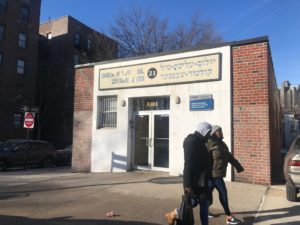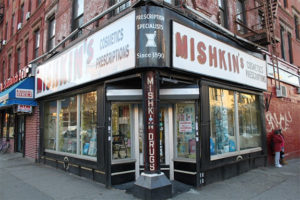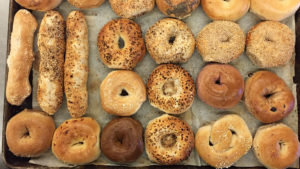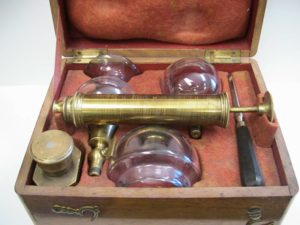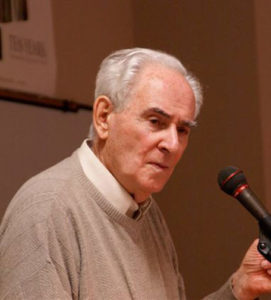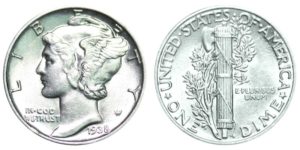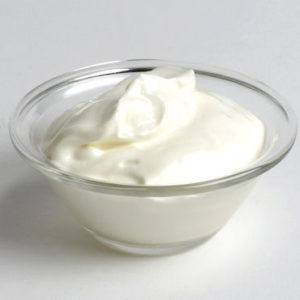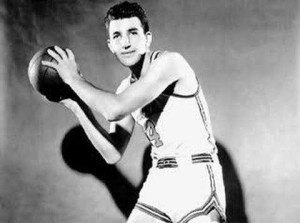Yiddish was the language of Ashkenazi Jews. Scorned by Zionists who felt it echoed the European ghettoes, they replaced it with Modern Hebrew. However diminished (millions of Yiddish speakers were murdered in the Holocaust), Yiddish lingers on. There is a splendid body of literature (and much poetry) in Yiddish. I.B. Singer, Nobel prize winner, was one of many important writers whose work was in Yiddish. HG’s late Mom. was born Ida Kopkind in a Belorussian “shtetl” in the Minsk province. She spent the majority of her life in Bronx apartments before her death in a nursing home. Yiddish is a very flexible language, reflecting the nomadic life of Jews in the diaspora. Mom adapted Yiddish into a language HG calls “Yinglish.” How did Mom identify her apartment house neighbors? The woman next door was the “nextdoorehkeh.” And, so on: “upstezzehkeh”, “downstezzehkeh”, “groundfloorehkeh”. An unsavory person was a “nogoodnik.” A flighty young woman, possibly free with her favors, was a “bummerkeh.” Mom Yinglishized geography. HG’s family lived in “Duh Bronix”. Relatives lived in “Brunzevlle” (the Brownsville neighborhood of Brooklyn). A non sequitur: Mom was very gracious when it came to complimenting unmarried women. No matter how unsightly, Mom would always focus on a desirable feature. About a spinster with a face like a potato, Mom pointed out: “She has lovely hands.”
Yinglish
May 4th, 2020 § 0 comments § permalink
Happy Bronx Memories
April 24th, 2020 § 0 comments § permalink
HG grew up during the Great Depression and World War Two. Grim years. Before Stalingrad, it looked like Hitler might win. But, there were many happy times in The Bronx for young HG. The best was afternoon story hour at the Bainbridge Public Library (located between Kingsbridge Road and Fordham Road). During the winter, children gathered in the Story Room. A comforting log fire crackled in a fireplace. A gentle-voiced (tiny hint of an Irish brogue) librarian read stories to the children (dramatic inflections). HG dreamed of living in a home with a wood-burning fireplace (for the last 60 years this has been accomplished in New York, New Jersey, Colorado, New Mexico, Nantucket, Fire Island, Prince Edward Island homes). Few cars during wartime so there were happy games played in the streets: Punchball, roller skate hockey, stoop ball, box ball, “Association” football. Enjoyed walking and bicycling (rented bikes) the majestic (much dazzling art deco architecture) Grand Concourse, with late, beloved sister, Beulah Naomi. Tastiest food memories were of Mom’s blintzes, pastrami and corned beef sandwiches at Tower Delicatessen on Kingsbridge Road, Sunday smoked fish brunches with fresh bialys, onion rolls and rye bread from a local bakery.
The Drug Store
May 10th, 2018 § 0 comments § permalink
In HG’s youth, The Bronx was dotted with small “drug stores.” They were never called “pharmacies” and the man in charge was a “druggist,” not a “pharmacist.” The drug stores have disappeared, replaced by the huge impersonal pharmacy chains: Walgreens, CVS and in New York, Duane Reade. The old time druggist presided over his domain behind a counter with a background of multi-colored apothecary jars. He was a valuable resource in Bronx neighborhoods. He performed quasi-medical tasks like removing a cinder from an eye, putting iodine on a scraped knee. He gave free medical advice. If things looked grim, he would say: “See a doctor.” Timid young men would whisper “Trojans” to the druggist and would receive the condoms without comment. Then the condoms would nestle in a wallet (often for years) until the long awaited romantic moment arrived.
Bronx Bakeries: Jewish
May 8th, 2018 § 2 comments § permalink
All main shopping avenues in The Bronx of yesteryear had a “Jewish” bakery. Yes, there were non-Jewish bakeries spread throughout the Bronx and HG will describe them in a following post. But, in HG’s youth, the Jewish bakery on West Kingsbridge Road was the dispenser of joy. Bagels, Bialys, “pletzels” (onion topped flat breads); onion rolls,crisp skinned rolls dotted with poppy seeds, rye bread, pumpernickel bread, corn bread. All of these were worthy companions of the Sunday feast of cream cheese with lox, sturgeon, whitefish, sable, kippered salmon. Plus pickles, olives, sliced tomatoes and onions. Plentiful coffee (and a few shots of brandy). Big time smoked fish jamboree. The bakery also carried a variety of cookies (not great), cheesecake (great); a version of Italian almond biscotti called “mondelbrot” (great), jelly doughnuts and crullers (fair); “mondels” , hollow little balls of dough to be added to soup. HG’s late Mom made tiny balls of dough and baked them into a sticky loaf with honey and ginger. This was called “taigelach” (super great). She also made cinnamon and walnut “rugelach” (ultimate state of the art). Today’s rugelach sold by everyone from Zabar’s to Whole Foods are a pallid imitation. Elaborate, high-cal butter cream cakes were a staple at the bakery. HG’s Mom and Dad brought them to the apartments of friends when they gathered for an evening of gossip, pinochle, Russian tea and vishniak (cherry brandy). The friends reciprocated and little HG ate a left over sliver with breakfast.
Home Remedies From the Shtetl
May 15th, 2017 § 0 comments § permalink
Following the example of President Roosevelt, daring fighter pilots, baseball players and, yes, doctors, HG began smoking cigarettes in 1942 at the age of 13. Puffed as many as three packs of Marlboros daily (they were the healthy choice because they had a filter). No surprise, HG was diagnosed with throat cancer in 1992. Saved by a brilliant surgeon, Dr. Victor Schramm. Arduous recovery. Stopped smoking on day of diagnosis. Now celebrating 25th anniversary of being smoke free. However, the 50 years of smoking did create problems. HG has COPD (chronic obstructive pulmonary disease). However, due to advanced pharmacology and technology, HG functions nicely. Walks (slowly), swims daily, does gym work (light weights) and cardiology exercises (treadmill, bike, steps). It helps to have a vigilant and caring family. BSK is a diligent supervisor of diet, vitamins, exercise. And, of course, much is owed to SJ who discovered a lump on his Dad’s neck 25 years ago. Urged immediate diagnosis. Probably, saved HG’s life. From the very beginning of HG’s life, bronchial disease was a problem. Recurrent bronchitis every winter. HG’s Mom believed in the folk remedies of Plestyanitz, the “Shtetl” in Belorussia where she grew up over one hundred years ago. “Shtetl” is the descriptive of the small towns where Jews lived within the Russian Pale of Settlement. Sanitary and sewage facilities were primitive, Health care was medieval;. However, HG’s mom treated HG’s bronchitis the way she was treated in Russia. Basis of the cure was a “shvitz” (a sweat). Many blankets were piled on little HG. Then he drank a glass of “gugel mugel” (a glass of hot milk, honey and rye whiskey). This was followed by numerous hot cups of tea and honey. And, more blankets. Yes, little HG sweated in this Jewish version of an Indian sweat lodge. If this remedy didn’t work HG’s Mom took the drastic step of summoning the “bynkes” man. A “bynke” is a shallow glass suction cup. The “bynkes” man arrived with a leather case of the cups and a heating apparatus. An old little fellow with a long beard, he smelled strongly of whiskey and cheap cigars. Mom was forgiving. “Alteh shikker muz machen ah leben”. (an old drunk must make a living). The suction cups were heated to a robust temperature. Then they were applied with pressure to little HG’s chest and back. Ouch!! The belief was that the heat and the suction would draw out and ultimately destroy the disease. Surprisingly, it worked. It was infallible. The suction cups led to a Yiddish saying describing an ineffectual maneuver: “Helft vey toyten bynkes” It helps like dead (cold) bynkes.
Lawrence L. Langer
May 10th, 2017 § 2 comments § permalink
There was a glaring omission from HG’s recent post, “Thanks Sam”. HG mentioned the careers of fellow members of Hurricanes, SAC., the club of HG’s Bronx youth. Carelessly, HG didn’t mention Lawrence L. Langer. Larry was a special pal of HG’s. A Professor at Simmons College, Boston, for many years until retirement in 1992, Larry is one of the foremost scholars and analysts of the Holocaust. He was the first academic to teach a course on the Holocaust. Among his many books are: “Holocaust Testimonies”, “Admitting the Holocaust”, “The Holocaust and the Literary Imagination”, “Art From the Ashes.” The books have received many awards and Larry has been given honorary degrees from a number of colleges and universities. Larry’s analysis of the Holocaust has been rigorous and dispassionate. He has been skeptical of efforts to deflect attention from the realities of industrialized killing of Jews by emphasizing resistance and rescue. He has challenged the idea that the Holocaust–a mass murder–sanctifies the dignity of the human spirit. Larry established the idea of “choiceless choice” to describe the disintegration of moral reality for concentration camp inmates. Though grim and unsparing, Larry’s books are an essential read if you wish to understand modern history.
The Dime
March 21st, 2017 § 1 comment § permalink
Found a thin dime in a coat pocket. Insignificant coin. That wasn’t the case when HG was a Bronx nine-year-old. Two dimes bought art, adventure, nourishment and appreciation of the female form and female artistic talent. HG would earn the two dimes by carrying the heavy shopping bags of women shopping at the Kingsbridge Road markets. (“Carry your bag, Lady?). Few buildings had elevators and sturdy little HG would have to trudge up many steps to earn a nickel or (rare) dime tip. When HG had the necessary two dimes it was off to Manhattan. Destination: The Metropolitan Museum of Art. Preparing for the trip, HG spent a dime on nourishment. A chunk of garlic salami (“A Nickel a Shtickel”) and two sour dill pickles (the tasty treats were wrapped in waxed paper and placed in a brown paper bag.) They were obtained at Tower Delicatessen. HG spent a nickel on the subway fare at the Kingsbridge Road/Jerome Avenue station. HG read abandoned copies of newspapers on the ride to 81st Street and Lexington Avenue. (yes, nine-year-olds traveled alone on subways in 1938). Quick walk to the Met. Admission was free for children (SJ notes that the Met is still donation-only meaning you have to pay something, even a penny, but the “suggested admission” is for tourists and suckers!) . First stop was The Armor Room. A stirring sight was fully armored knights on horses. Plenty of lances, axes, bludgeons, swords, daggers, spears to spark a young fellow’s imagination. There were two favorite paintings at the Met. One was “The Lady and the Parrot” by Gustave Courbet. Then and now, HG finds this the most beautiful (and sexiest) nude of a woman ever painted, The other was “The Horse Fair” by a female painter, Rosa Bonheur (1822-1899), the most famous female painter of the 19th Century. “The Horse Fair” is monumental, eight feet by 16 feet, Little HG would stand transfixed before this painting, which throbbed with the energy and beauty of rearing and tossing horses. Bonheur was an “animalier”, a painter of animals. (later in life, HG was happy to discover her “Plowing at Nivernais,” a serene but forceful depiction of oxen at the Musee d’Orsay in Paris). HG consumed the pickle and salami lunch with many glasses of free water, in the beautiful dining room of the Met. HG’s final nickel was spent on the subway ride home. Bedtime sleep was filled with beautiful and stirring images.
Smetana
March 17th, 2017 § 0 comments § permalink
Sour cream was omnipresent on the family table when HG was growing up in The Bronx. HG’s late Mom called it “smetana” (the Russian name). Though not observant of Jewish dietary restrictions, Mom confined sour cream to “dairy” (non-meat) dishes. Sour cream accompanied blintzes. Mom sneered at jam. Considered it an aberration of “galitzianers” (Galicans), Jews fixated on sweets. Kasha varnishkes (buckwheat groats and Italian “farfalle”) was topped with smetana as was cold beet borscht and “schav” (sorrel soup). Typical summer lunch was a bowl of sliced bananas (or seasonal strawberries, blueberries, blackberries) with ample smetana. There was a vegetable variant: chopped onions or scallions, cucumbers and radishes. Smetana covered bowls of cottage cheese or pot cheese (lots of kosher salt and black pepper). Mom always bought sour cream, cheese and butter at Daitch Dairy. Considered their products superior. HG/BSK continued that tradition when they lived on W. 79th in Manhattan and there was a Daitch Dairy on the southwest corner of Broadway (the cream cheese was epic and a ‘shmear” on a warm bialy turned morning coffee into a happy ritual). Sour cream plays a big role in fiery New Mexico cuisine. A scoop brings cool to a palate singed by chiles. HG/BSK like to top Goya black beans with chopped onion and sour cream. Mixed with Greek yogurt, sour cream accompanies a variety of BSK’s lamb, middle eastern and Indian dishes. HG is looking forward to Final Four and NBA playoffs. HG’s TV dinner will be small boiled potatoes covered with sour cream. Much salt and pepper, of course. Dill pickles. Icy vodka. Beer chasers. Smetana heaven.
Homage To Hershele
April 15th, 2016 § 4 comments § permalink
During HG’s young years, HG’s late, beloved father, Hershele Zvi Freimann (anglicized at Ellis Island to “Harry Freeman”), would arrive home after work in a breathless state. It was a long, uphill trudge from the Bronx’s 170th Street subway station (later the Kingsbridge station). Hershele hung up fedora and coat. Opened the refrigerator to get a piece of schmaltz (or home pickled) herring. Tore off a hunk of pumpernickel bread (Pechter’s or Stuhmer’s). Poured a substantial glass of Park & Tilford rye whiskey (tiny glass for little HG). Hershele and HG clinked glasses and said: “L’chaim !! (To Life). Hershele knocked off the big glass in one mighty gulp and followed it with the herring/pumpernickel chaser (HG opted for a small piece of bread). Yes, immigrant Jews like Hershele enjoyed alcohol. The pre-dinner drink was known as a “brumfen.” At the end of dinner, a dessert of fruit compote was served with a glass of home brewed “vishniak” (cherry brandy). Thus, HG grew up believing alcohol was part of dining. Hershele (and HG in later life) always accompanied spirits with food. HG sips bitters and soda before a meal with one or two shrimp, ceviche from the Pojoaque (New Mexico) Super Market, or a simple, salted cracker. Wine accompanies dinner and HG sips an after dinner TV-watching-snifter of brandy (or Scotch) with a sweet: peanut brittle or Belgian Butter Cookies. Tonight, HG’s meal will be an homage to much missed Hershele. There will be a bottle of icy Aakavit on the table plus dark ale brewed by New Mexico monks. Two kinds of herring: Pickled and Matjes. Gefilte fish and Jewish Rye Bread (both from New York’s Zabar’s via visiting Peter Hellman). Sliced sweet onions (from Texas). Boiled potatoes. Sour cream. For dessert: a thin slice of New York cheese cake with a snifter of brandy. HG will raise his glass of Aakavit and say “L’chaim !!. With a second glass, HG will raise it and say: “To your blessed memory, beloved Hershele.”
Memories of Dolph
December 12th, 2015 § 1 comment § permalink
Here is an improbable fact. HG once drove to the basket and scored while being guarded by the great basketball player (Hall of Famer) Dolph Schayes. This happened in the gym of Creston Junior High School in The Bronx when HG was 13 and Dolph was 14. HG was aided in the score by teammate Jerry Tenney (later a prominent New York real estate investor) who gave Dolph a push. Young Dolph was very tall, gawky and awkward. HG liked the smart, untalented young man. HG was present when Dolph made his high school debut as the center of the talented De Witt Clinton High School basketball team. Dolph had replaced graduating center Stretch Durant, a fan favorite. Still awkward, Dolph was not well received. But, Dolph soon got better and better. And, better. Soon, he was equal to the exciting Joel Kaufman with whom Dolph played at Clinton and N.Y.U.. HG was often present when Dolph (with the Syracuse Nats) came to New York to bedevil the Knicks. He had become a great professional star, deadly from inside and outside, a solid defender, deft passer, never static but always in motion. Dolph was the prototype of today’s power forwards. HG was sorry to read his obituary this week and bemused by the fact Dolph earned a total of $250,000 for his entire 16-year career as a pro star (12 times an NBA All Star and voted as one of the 50 Greatest Players in NBA history). Great player’s career timing was off.
